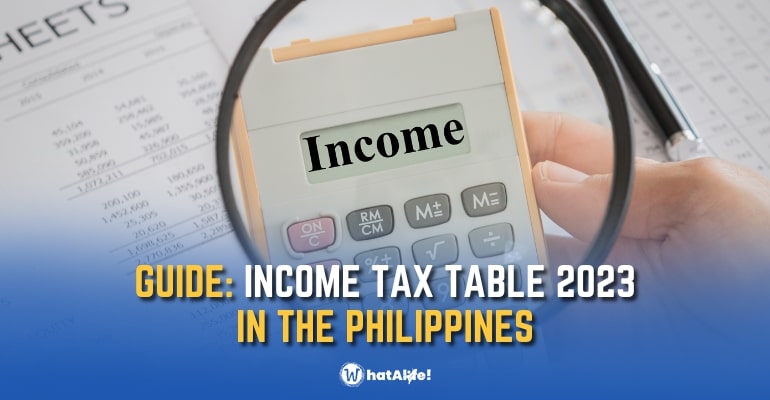Estimated reading time: 4 minutes
As a responsible citizen, it is important to be aware of your obligations to the government, including paying taxes. In the Philippines, income tax is one of the most significant types of tax that individuals and businesses need to pay. It is a percentage of the income earned during a specific period, and the amount varies depending on various factors.
Recently, the Philippine government released an updated income tax table, which is relevant to individuals and businesses for the taxable year 2023.
Table of Contents
Understanding Income Tax in the Philippines
Income tax is a tax levied on the income of individuals, corporations, and other entities. It is a primary source of revenue for the government and is used to fund various public services such as education, healthcare, and infrastructure.
The Philippine income tax system is progressive, meaning that the higher your income, the higher the tax rate you will pay. The system is divided into tax brackets, with each bracket having a corresponding tax rate.
Overview of the Updated Income Tax Table in the Philippines
For this year, we will see various changes in our tax system brought by the Republic Act (RA) No. 10963, also known as Tax Reform for Acceleration and Inclusion (TRAIN) Law, and RA No. 11534 or the Corporate Recovery and Tax Incentives for Enterprises (CREATE) Law.
Firstly, under the TRAIN Law, individual taxpayers with annual taxable income amounting to PhP250,000.00 or below are still exempt from paying income tax, while the rest of taxpayers, except those with taxable income of more than PhP8,000,000.00, will have lower tax rates ranging from 15% to 30%, previously 20% to 32%. On the other hand, to maintain a progressive form of taxation, the imposition of an income tax rate of 35% has been maintained for individual taxpayers whose annual taxable income exceeds PhP8,000,000.00.
Annual Income Tax Table for 2023 Onward
| Bracket | From | To | Fix Tax | Rate on Excess |
| 1 | 0 | 250,000 | 0 | 0 |
| 2 | 250,000 | 400,000 | 0 | 15% |
| 3 | 400,000 | 800,000 | 22,500 | 20% |
| 4 | 800,000 | 2,000,000 | 102,500 | 25% |
| 5 | 2,000,000 | 8,000,000 | 402,500 | 30% |
| 6 | 8,000,000 | and above | 2,202,500 | 35% |
How to Calculate Your Income Tax in the Philippines
Annual income:
- Not over PhP250,000.00 – None (zero percent)
- Over PhP250,000.00, but not over PhP400,000.00 – 15 percent of excess over PhP250,000.00
- Over PhP400,000.00, but not over PhP800,000.00 – PhP22,500.00 plus 20 percent of excess over PhP400,000.00
- Over PhP800,000.00, but not over PhP2,000,000.00 – PhP102,500.00 plus 25 percent of excess over PhP800,000.00
- Over PhP2,000,000.00, but not over PhP8,000,000.00 – PhP402,500.00 plus 30 percent of excess over PhP2,000,000.00
- Over PhP8,000,000.00 – PhP2,202,500.00 plus 35 percent of the excess over PhP8,000,000.00
Who Needs to Pay Income Tax in the Philippines?
In the Philippines, individuals who receive income are required to pay income tax. This includes both local and foreign employees, business owners, and professionals. Self-employed individuals are also required to pay income tax based on their net income. Income tax is imposed on various types of income, including salaries, wages, bonuses, commissions, rental income, business income, and capital gains.
However, there are certain exemptions and deductions that can lower an individual’s taxable income and reduce their income tax liability. It is important to note that failure to pay income tax or filing a false income tax return can result in penalties and other legal consequences.
How the Updated Income Tax Table Affects Employees and Employers
For employees, the updated income tax table provides relief for low and middle-income earners as they will pay less income tax. This can increase the disposable income of employees, which can stimulate economic growth. Employees earning below ₱2 million per year can expect to pay lower taxes than they did before the updated tax table was introduced. This could encourage consumer spending, which can boost the economy.
On the other hand, for employers, the updated income tax table can result in reduced labor costs as they will need to pay less income tax for their employees. This could lead to savings for employers and may encourage them to invest more in their businesses, hire more employees, or offer higher salaries and benefits.
The updated income tax table in the Philippines provides relief for low and middle-income earners while reducing labor costs for employers. This can have a positive impact on the economy by increasing disposable income and stimulating consumer spending. It is important for individuals and businesses to understand how the updated income tax table affects them and to consult with tax professionals if necessary. Overall, the updated income tax table is a step towards a more equitable and efficient tax system in the Philippines. – WhatALife!/Jayve
Also read: GUIDE: 2023 Withholding Tax Table in the Philippines

Leave a Reply